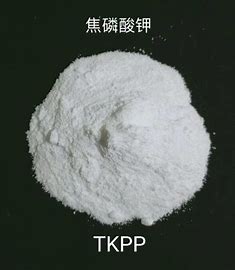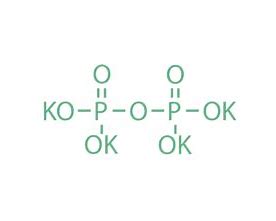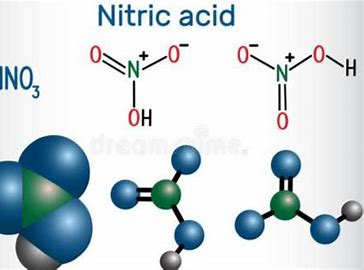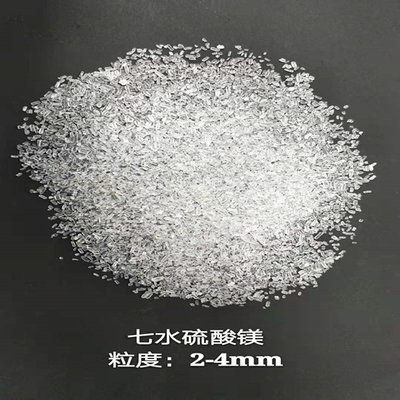Hydrofluoric Acid Formula in Aqueous Solution Guide
Hydrofluoric acid (HF) is an incredibly unique and hazardous chemical, renowned for its ability to dissolve glass and its severe health implications. While its simple formula HF might suggest a straightforward nature, the chemical structure of hydrofluoric acid (or hydrogen fluoride in its pure form) holds the key to understanding its distinctive and potent properties.
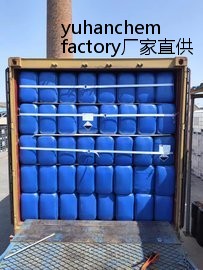
Introduction: The Paradox of Hydrofluoric Acid in Water
Imagine a chemical so potent it can effortlessly dissolve solid glass, a material often considered inert. This is the power of Hydrofluoric Acid (HF), an indispensable compound across industries ranging from the intricate etching of semiconductors and the meticulous fabrication of optical fibers to petroleum refining and the synthesis of specialized fluorochemicals. Yet, this formidable corrosivity presents a profound paradox to anyone familiar with acid-base chemistry. While one might expect such a powerful agent to be a “strong acid” in the conventional sense – completely dissociating in water – HF behaves remarkably differently.
The apparent contradiction lies in its classification: in dilute aqueous solution, HF is paradoxically considered a weak acid. This stands in stark contrast to its fellow halogen acids (HCl, HBr, HI), all of which are categorized as strong acids that fully ionize in water. This guide will unravel this enigma. We will explore the Hydrofluoric Acid formula within its aqueous solution context, meticulously examining its dissociation, the dynamic nature of its chemical equilibrium, and the unique structural and bonding factors that orchestrate its peculiar acid strength. This profound understanding is not merely for academic curiosity; it is absolutely vital for safely harnessing HF’s industrial power and mitigating its severe hazards.
Understanding the HF Formula in Aqueous Solution: Dissociation and Equilibrium
At its core, understanding HF in aqueous solution requires comprehending how it interacts with water, the solvent. An aqueous solution simply means water is the primary medium for dissolution.
While a simplistic view might represent HF’s dissociation as:
HF(aq)⇌H+(aq)+F−(aq)
This equation, while illustrating the release of a proton and a fluoride ion, is an oversimplification. In reality, acids react with water molecules to produce hydronium ions. The more accurate representation of HF’s ionization in water involves the formation of the hydronium ion (H₃O⁺):
HF(aq)+H2O(l)⇌H3O+(aq)+F−(aq)
Here, the hydronium ion (H₃O⁺) is the true acidic species responsible for the properties of HF in solution. The double arrow (⇌) is critically important. It signifies that this is a chemical equilibrium, meaning the dissociation of HF is incomplete. At any given moment in a dilute aqueous solution of HF, only a small fraction of the initial HF molecules actually undergo ionization to produce hydronium ions and fluoride ions. The vast majority of the HF remains in its undissociated, molecular form. This incomplete dissociation is the defining characteristic of a weak acid.
To quantitatively measure this acid strength, chemists use the acid dissociation constant (Ka). For HF, the Ka value at 25°C is approximately 6.8×10−4. When compared to strong acids, which have very large Ka values (Ka≫1), this relatively small number definitively confirms HF’s classification as a weak acid. The Ka expression for HF is:
Ka=[HF][H3O+][F−]
Why is HF a “Weak” Acid? The Role of Structure and Bonding
This section is where the paradox of HF’s strength is truly resolved. The answer lies deep within its unique chemical structure and the nature of its bonding.
- Exceptionally Strong H-F Bond Energy: At the heart of HF’s “weakness” is the H-F covalent bond itself. Fluorine is the most electronegative element on the periodic table, forming an incredibly strong and stable bond with hydrogen. To release an H⁺ ion (a proton), this robust bond must be broken. Breaking this bond requires significantly more energy compared to breaking the weaker bonds in HCl, HBr, or HI (where bond strength decreases as you move down the halogen group due to increasing atomic size and bond length). This high bond energy makes the initial dissociation process energetically less favorable.
- Extensive Intermolecular Hydrogen Bonding: The high electronegativity of fluorine, combined with the small size of the hydrogen atom, creates the perfect conditions for exceptionally strong hydrogen bonding interactions. These forces occur in two crucial ways:
- Between HF Molecules: Especially prevalent in concentrated solutions, HF molecules form extensive hydrogen-bonded networks, often associating into chain-like or even cyclic polymeric structures (e.g., (HF)n). This strong intermolecular attraction effectively “traps” undissociated HF molecules, preventing them from interacting with water and ionizing.
- Between HF and Water Molecules: Strong hydrogen bonding also occurs between HF molecules and water molecules. While this might seem to promote dissociation, it also creates stable clusters that can effectively “sequester” both undissociated HF and formed fluoride ions (F⁻), hindering their full participation in the dissociation equilibrium and further reducing the effective concentration of free hydronium ions.
- Formation of Stable Complex Ions (The Bifluoride Ion): This is perhaps the most unique and significant factor contributing to HF’s peculiar acidity and reactivity. The fluoride ion (F⁻) has an exceptionally strong and unusual affinity for undissociated HF molecules, leading to the formation of a very stable complex ion known as the bifluoride ion (HF2−): F−(aq)+HF(aq)⇌HF2−(aq) The formation of this highly stable bifluoride complex effectively removes both F− ions (a product of the initial dissociation) and undissociated HF (a reactant) from the primary dissociation equilibrium. According to Le Chatelier’s Principle, the removal of products and reactants from an equilibrium system causes the system to shift to counteract that removal. In this case, it drives the primary dissociation (HF(aq)+H2O(l)⇌H3O+(aq)+F−(aq)) further to the left. This dramatically reduces the overall extent of ionization and the effective concentration of hydronium ions, making HF appear even weaker than its inherent bond strength alone might suggest. This formation of complex ions is a key reason why concentrated HF solutions are paradoxically much more corrosive and dangerous than dilute ones, as the equilibrium significantly shifts towards these highly reactive species.
The pH of Hydrofluoric Acid Solutions: A Concentration-Dependent Reality
Due to its nature as a weak acid, calculating the pH of an HF solution is not as straightforward as for a strong acid.
- Relationship to Ka and Concentration: The pH of an HF solution must be calculated by solving an equilibrium problem using its Ka value and the initial concentration. This contrasts with strong acids, where the pH can often be directly determined from the initial acid concentration.
- Significant Concentration Dependence: Unlike strong acids (e.g., a 0.1 M HCl solution will always have a pH of 1), the pH of an HF solution varies significantly with its concentration. This is because the incomplete dissociation and the formation of complex ions mean that the concentration of H3O+ does not increase linearly with the initial HF concentration. Higher nominal concentrations do not necessarily lead to proportionally lower pH values in the same way as strong acids.
- Impact on Corrosivity (Crucial Distinction): It is absolutely critical to understand that HF’s extreme corrosivity, particularly its notorious ability to etch glass and cause devastating deep tissue damage, is NOT primarily due to a very low pH (i.e., a high hydronium ion concentration) in dilute solutions. Instead, the danger lies in the unique and exceptionally reactive nature of the fluoride ion (F⁻) itself. The fluoride ion readily complexes with silicon (in glass) and essential biological ions like calcium and magnesium, which drives its dangerous properties far beyond what its pH might suggest.
Factors Affecting HF Acidity and Reactivity in Aqueous Solution
The behavior of HF in aqueous solution is dynamic and influenced by several factors:
- Concentration: As the initial concentration of HF in aqueous solution increases, the degree of dissociation (the percentage of HF molecules that ionize) actually decreases. However, the total number of H3O+ and F− ions, as well as HF2− ions, increases (though not linearly). This concentration effect profoundly impacts HF’s reactivity, making concentrated HF solutions significantly more dangerous and corrosive than diluted ones due to the increased prevalence of the highly reactive fluoride and bifluoride species.
- Temperature: Temperature influences chemical equilibrium. For most weak acids, increasing temperature generally increases the Ka value, leading to a slightly greater extent of dissociation. However, the primary effect of elevated temperature on HF’s hazard is often related to a significant increase in its vapor pressure, leading to higher concentrations of toxic HF fumes, and an acceleration of its chemical reaction rates.
- Presence of Other Ions: The presence of other ions in solution can drastically affect HF’s equilibrium. For example, if calcium ions are present, they will preferentially react with fluoride ions to form insoluble calcium fluoride (CaF2), effectively removing F− from the solution. According to Le Chatelier’s Principle, this removal of a product shifts the dissociation equilibrium of HF further to the right, increasing HF’s effective dissociation and the concentration of H3O+ (though still a weak acid overall). This is the basis for calcium gluconate gel as an HF antidote.
- Surface Interactions: The interaction of HF in aqueous solution with various surfaces (e.g., glass, metals) is a critical factor influencing its observed reactivity. As mentioned, the strong affinity of the fluoride ion for silicon is the driving force behind glass etching.
Conclusion: The Complex Beauty and Danger of HF in Water
The simple Hydrofluoric Acid formula, HF, truly conceals a remarkable chemical complexity when it interacts with an aqueous solution. Unlike its hydrohalic counterparts, HF behaves as a weak acid in dilute solutions. This perplexing behavior is a direct consequence of the interplay between its exceptionally strong H-F bond, the extensive network of hydrogen bonding it forms, and the critical role of the stable bifluoride ion.
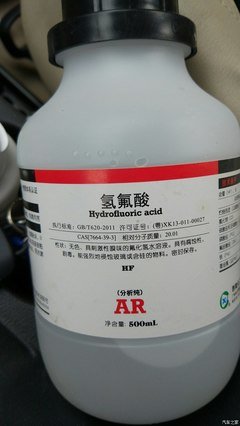
A thorough understanding of its dissociation, the dynamic nature of its chemical equilibrium, and the unique factors that govern its acid strength and profound reactivity is not merely fundamental for academic comprehension; it is absolutely essential for the safe handling, storage, and judicious application of this uniquely potent and exceptionally dangerous chemical in all industrial and laboratory settings. The true danger of HF lies not solely in its pH or its classification as a weak acid, but in the specific, insidious reactivity of its fluoride ion with a wide range of materials and biological systems.
Frequently Asked Questions (FAQ)
- Is Hydrofluoric Acid a strong acid like HCl? Why or why not? No, in dilute aqueous solution, HF is classified as a weak acid. This is primarily due to its strong H-F bond, extensive hydrogen bonding, and the formation of the stable bifluoride ion (HF2−), which all limit its complete dissociation.
- What is the pH of a 0.1 M HF solution? The pH of a 0.1 M HF solution is typically around 2.1-2.2, which is higher than a strong acid of the same concentration (e.g., 0.1 M HCl has a pH of 1). This higher pH reflects its incomplete dissociation.
- How does hydrogen bonding affect HF’s acid strength? Strong hydrogen bonding in HF aqueous solution “ties up” both undissociated HF molecules and fluoride ions, hindering their ability to participate fully in the dissociation equilibrium and thus reducing the effective concentration of H3O+.
- What is the bifluoride ion (HF2−) and why is it important for HF? The bifluoride ion is a stable complex formed when a fluoride ion (F−) strongly hydrogen bonds with an undissociated HF molecule (F−⋅HF). Its formation removes both reactants and products from the primary dissociation equilibrium, shifting the equilibrium to the left and making HF effectively weaker in solution, particularly in higher concentrations.
- Why is HF used for glass etching if it’s a weak acid? The ability to etch glass is not directly related to HF’s acid strength (its pH). Instead, it’s due to the unique and extremely strong affinity of the fluoride ion (F⁻) for silicon (the primary component of glass), forming stable silicon-fluorine compounds like SiF4 or H2SiF6.
- What are the immediate safety concerns when working with HF aqueous solution? The primary concerns are severe skin burns (often delayed pain), deep tissue penetration, and systemic toxicity due to fluoride ion absorption. Inhalation of vapors is also highly dangerous. Immediate, specific first aid (calcium gluconate gel) is crucial.
References
- Atkins, P. W., & de Paula, J. (2014). Atkins’ Physical Chemistry (10th ed.). Oxford University Press. (For general acid-base equilibrium and physical properties)
- Brown, T. L., LeMay, H. E., Bursten, B. E., Murphy, C., Woodward, P., & Stoltzfus, M. (2018). Chemistry: The Central Science (14th ed.). Pearson. (For chemical bonding and acid-base concepts)
- U.S. Occupational Safety and Health Administration (OSHA) Fact Sheets on Hydrofluoric Acid. (For safety and handling guidelines).
- National Institute for Occupational Safety and Health (NIOSH) publications on HF.
- Greenwood, N. N., & Earnshaw, A. (1997). Chemistry of the Elements (2nd ed.). Butterworth-Heinemann. (For detailed inorganic chemistry of fluorine and HF).
- [Further links to peer-reviewed scientific articles or reputable chemical safety organizations for more in-depth information on HF solution chemistry.]

